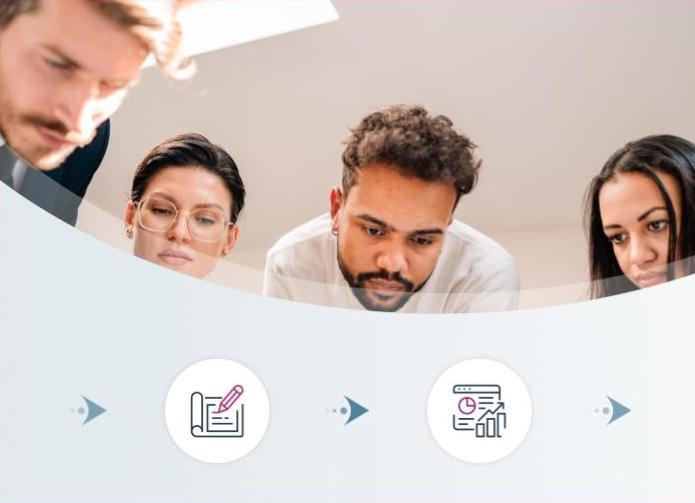Like any business model, a learning program should differ from company to company. Each company has its own specific needs, business culture, work style and budget. These factors will inform you of the specific learning program your business will need.
Going about the eLearning journey in a careful, well-thought-out manner will ensure that you not only save time and money but that you also have a comprehensive and effective system in place. So, let's dive into the process of selecting the right learning program for your business.
Understand your L&D goals
Aligning training objectives with business objectives is the first step in developing a successful learning program. Ask yourself, what do you want to accomplish? How can employee training get you there? These questions will allow you to understand what you need to do and how to get there. However, it isn't always that easy to align your training with your business goals while making an engaging training program. That's why we've outlined how to set and understand your L&D goals.
Understand what you want
Focusing on the vision, mission, and goals that shape the future of your business. Are you aiming to increase performance rates for your sales team? Double your customer base? Whatever it is, make sure you use the proper goal-setting criteria.
Search for gaps
Initiating a training needs analysis will allow you to see how your current employee base is performing against where you need them for goal achievement. By identifying these gaps, you'll be able to set your training goals in the right direction.
Set strategic goals
Setting objectives for training and development is essential in closing the gaps you recognised in the previous step. Here, you want to decide whether to upskill, reskill or transfer skills for specific employees to reach your goals.
The outline you now have from the above three steps will help you understand your goals for creating a learning program. Setting goals is essential in ensuring the success of your learning program while informing the approach you need to take to best fit your organisational needs.
Managing learning development capabilities
It's important to understand that your organisation might require multiple workforce development programs to meet employee needs. You may decide to implement an in-person learning program or find that a blended program fits your employee base better. Whichever you choose will inform how you go about developing the program.
You may also need detailed insights into your employee's learning capabilities; how well they take in new information and where specific employees can improve. When implementing a well-developed learning program, you should be able to point to where additional coaching is needed and where knowledge gaps exist. Such information will help employees focus on the areas that need training while avoiding areas that may cause information redundancy.
Employee learning capabilities vary, and understanding each employee's differences will help you build a successful learning program that allows your organisation to reach its goals.
Implementation
Now that you have set your goals and have identified a program that allows you to adjust learning to the capabilities and needs of each learner, you can begin implementing the training program.
Assess training needs
The training needs will align with your L&D goals. This is the reason for your training, why you are initiating a learning program and what you expect out of the training. Include any points of focus that you pulled from your training needs analysis.
Create a training action plan
A training action plan includes learning theories, instructional design, content, materials, and other training elements. Required resources and all training material should also be outlined here. Feedback and first-hand information from employees regarding their training expectations and learning styles before initiating the program will help you implement training successfully.
Implementation
The implementation phase is where your training program comes to life. Deciding to develop your training program externally means you will need to look at a section process for a vendor. Here, you want to look for a vendor with relevant experience and a good fit with your company culture. The vendor should allow you to have various customisation options and technology capabilities. Once you have linked your expectations and goals with the vendor's offering, you can begin to develop the program.
Evaluation and maintenance
During training, participants' progress should be monitored and evaluated to determine the effectiveness of your program. Comparing the outcomes of the training program to your expectations and organisational objectives will inform you whether or not you need to adjust the content of your program. Feedback should be obtained from all stakeholders of the program. Analysing the data you collect on the performance of your learning and your learners will help you identify any weaknesses in the program and build a more effective learning program.

.png)

